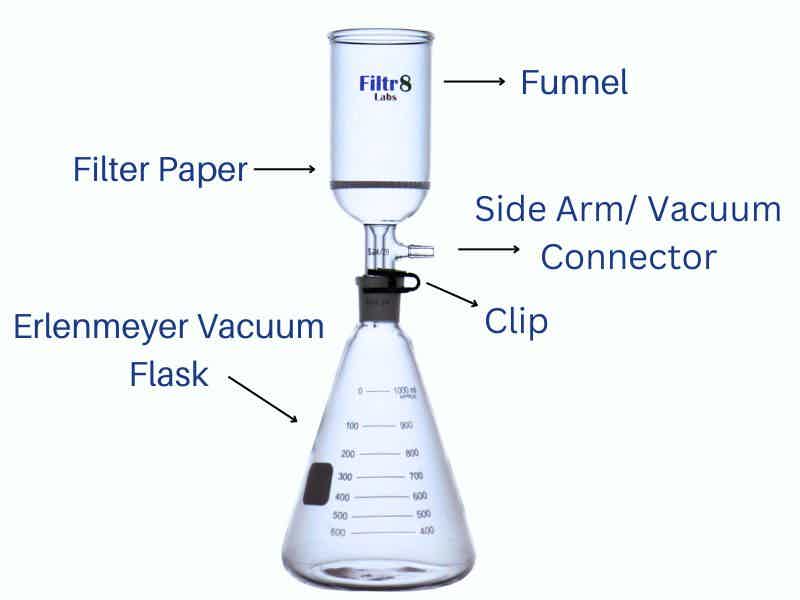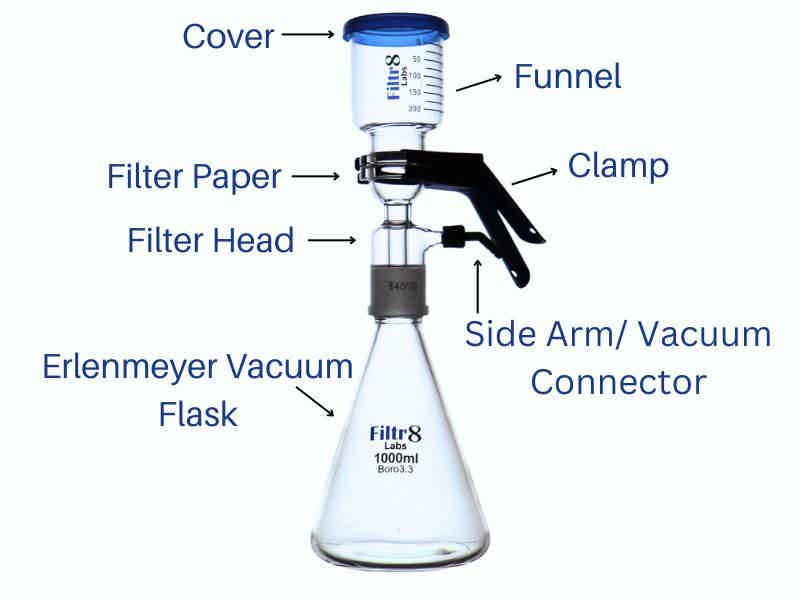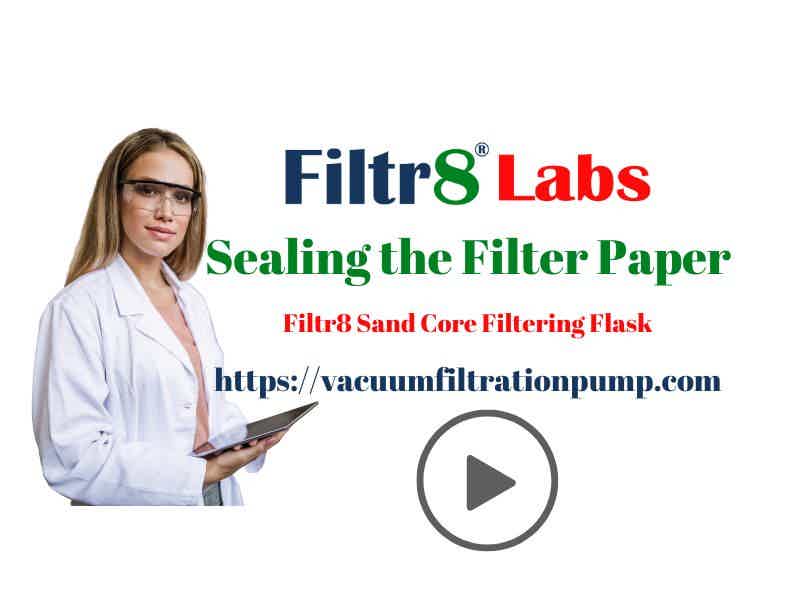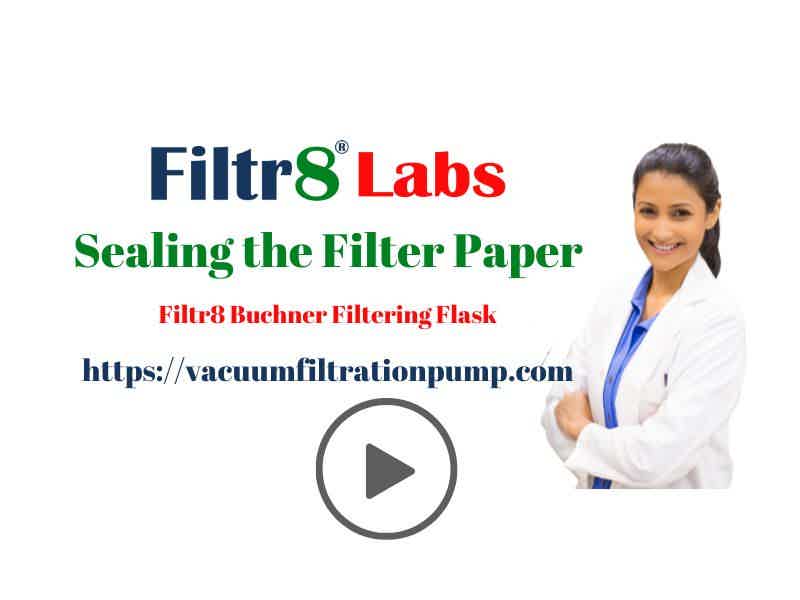Vacuum Filtration Setup
How to Optimize for Maximum Efficiency
Vacuum Filtration Setup
How to Optimize for Maximum Efficiency
how to set up vacuum filtration
Vacuum filtration is a commonly used technique in chemistry and biology laboratories to separate solids from liquids. It involves using a vacuum to draw the liquid through a filter paper or membrane, leaving behind the solid residue. To learn how to set up a vacuum filtration, you will need the following materials:
1. Buchner funnel: This is a funnel with a flat bottom and a perforated plate that fits into the neck of the funnel. It is used to hold the filter paper or membrane in place and to support the solid residue during filtration.
2. Vacuum flask: This is a round-bottomed flask with a sidearm that connects to the vacuum pump. The flask is used to collect the filtrate that passes through the filter paper or membrane.
3. Rubber stopper or ground glass joint: This is used to seal the neck of the vacuum flask and to hold the sidearm that connects to the vacuum pump.
4. Vacuum pump: This is used to create a vacuum in the system, which draws the liquid through the filter paper or membrane.
5. Tubing: This is used to connect the vacuum pump to the sidearm of the vacuum flask.
6. Filter paper or membrane: This is used to separate the solid residue from the liquid. The choice of filter paper or membrane will depend on the size and nature of the particles being filtered.
7. Clamp: These are used to hold the vacuum filtration Buchner funnel in place on top of the vacuum flask.
Typical Buchner Funnel Setup

Typical Sand Core Flask Setup

What materials are needed to set up a vacuum filtration?
Vacuum filtration is a commonly used technique in chemistry and biology laboratories to separate solids from liquids. It involves using a vacuum to draw the liquid through a filter paper or membrane, leaving behind the solid residue. To set up a vacuum filtration, you will need the following materials:
1. Buchner funnel: This is a funnel with a flat bottom and a perforated plate that fits into the neck of the funnel. It is used to hold the filter paper or membrane in place and to support the solid residue during filtration.
2. Vacuum flask: This is a round-bottomed flask with a sidearm that connects to the vacuum pump. The flask is used to collect the filtrate that passes through the filter paper or membrane.
3. Rubber stopper or ground glass joint: This is used to seal the neck of the vacuum flask and to hold the sidearm that connects to the vacuum pump.
4. Vacuum pump: This is used to create a vacuum in the system, which draws the liquid through the filter paper or membrane.
5. Tubing: This is used to connect the vacuum pump to the sidearm of the vacuum flask.
6. Filter paper or membrane: This is used to separate the solid residue from the liquid. The choice of filter paper or membrane will depend on the size and nature of the particles being filtered.
7. Clamp: These are used to hold the Buchner funnel in place on top of the vacuum flask.
Typical Buchner Funnel Setup

Typical Sand Core Flask Setup

What type of vacuum pump is best for vacuum filtration?
Vacuum filtration is a widely used technique in various scientific and industrial processes for separating solids from liquids. A vital component of this process is the vacuum pump, which provides the suction force to drive the filtration. But what type of vacuum pump is best for vacuum filtration?
The answer to this question depends on several factors, such as the volume of the liquid to be filtered, the type and size of the filter, and the desired level of vacuum. Generally, two types of vacuum pumps are suitable for vacuum filtration: diaphragm pumps and rotary vane pumps.
Diaphragm pumps are an excellent choice for small-scale filtration processes that require low to moderate vacuum levels. These pumps use a flexible diaphragm to create a vacuum and are known for their quiet operation and low maintenance requirements. They are also oil-free, which makes them ideal for filtration applications that require a clean and dry vacuum.
What type of vacuum pump is best for vacuum filtration?
Vacuum filtration is a widely used technique in various scientific and industrial processes for separating solids from liquids. A vital component of this process is the vacuum pump, which provides the suction force to drive the filtration. But what type of vacuum pump is best for vacuum filtration?
The answer to this question depends on several factors, such as the volume of the liquid to be filtered, the type and size of the filter, and the desired level of vacuum. Generally, two types of vacuum pumps are suitable for vacuum filtration: diaphragm pumps and rotary vane pumps.
Diaphragm pumps are an excellent choice for small-scale filtration processes that require low to moderate vacuum levels. These pumps use a flexible diaphragm to create a vacuum and are known for their quiet operation and low maintenance requirements. They are also oil-free, which makes them ideal for filtration applications that require a clean and dry vacuum.
How to Fit Filter Paper Correctly in a Funnel?
A Buchner funnel is commonly used in a vacuum filtration set up. It is essential to ensure that the filter paper fits correctly in the funnel to obtain accurate and reliable results. Here are some steps that can help you ensure that the filter paper fits correctly in a Buchner funnel:
1. Choose the right size: The first step is to choose the appropriate size of filter paper that fits the Buchner funnel. The filter paper should cover the entire surface of the funnel without any gaps or folds. A smaller filter paper may not cover the entire surface, while a larger one may overlap and cause leakage.
2. Center the filter paper: Place the filter paper in the center of the funnel and press it gently against the surface. The filter paper should be in contact with the entire surface of the funnel to prevent any bypass or leakage.
3. Use a spatula: If the filter paper does not fit correctly, you can use a spatula to adjust it. Gently press the filter paper against the funnel surface with the spatula to remove any gaps or folds.
4. Apply suction gradually: Once the filter paper is in place, apply suction gradually to avoid any sudden pressure changes that may cause the filter paper to shift.
5. Wet the filter paper to help it stick to the surface and prevent any air bubbles or gaps. It also helps in removing any impurities from the filter paper.
How to Fit Filter Paper Correctly in a Funnel?
Buchner funnel is a commonly used laboratory equipment for filtration purposes. It is essential to ensure that the filter paper fits correctly in the funnel to obtain accurate and reliable results. Here are some steps that can help you ensure that the filter paper fits correctly in a Buchner funnel:
1. Choose the right size: The first step is to choose the appropriate size of filter paper that fits the Buchner funnel. The filter paper should cover the entire surface of the funnel without any gaps or folds. A smaller filter paper may not cover the entire surface, while a larger one may overlap and cause leakage.
2. Center the filter paper: Place the filter paper in the center of the funnel and press it gently against the surface. The filter paper should be in contact with the entire surface of the funnel to prevent any bypass or leakage.
3. Use a spatula: If the filter paper does not fit correctly, you can use a spatula to adjust it. Gently press the filter paper against the funnel surface with the spatula to remove any gaps or folds.
4. Apply suction gradually: Once the filter paper is in place, apply suction gradually to avoid any sudden pressure changes that may cause the filter paper to shift.
5. Wet the filter paper to help it stick to the surface and prevent any air bubbles or gaps. It also helps in removing any impurities from the filter paper.


